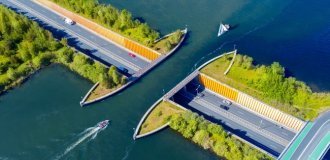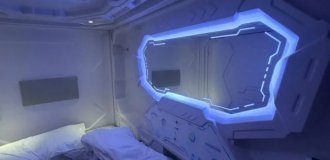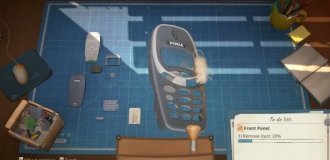We found the head of the largest road train, showing what's inside (15 photos)
This is the head of the largest and longest road train from ever created in the world. The road train was called LeTourneau TC-497, it was developed in the 50s, and after the closure of the project in the 70s, this the head was placed in a place called Yuma Proving Ground Heritage Center, where it stands to this day as a monument. 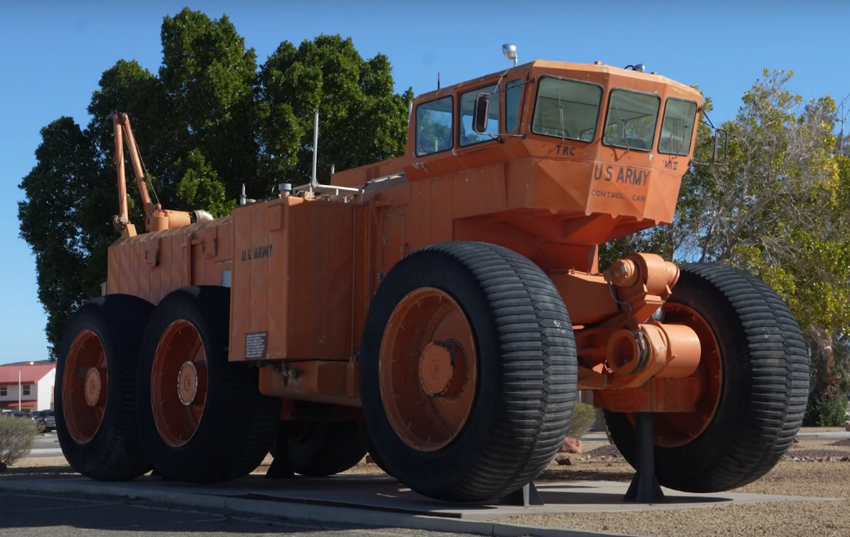
But before you get inside and show how everything works there, you need to tell a little about the project.
It all started with the fact that the US high command suddenly thought: what will happen if the USSR has all the iron roads "multiply by zero" with their missiles?
And in order not to be completely without transport, higher management agreed to build a train that would not need railroads. This is how the idea of building a 173-meter high road trains with large wheels. He was supposed to pass everywhere, from deserts to snowy areas. 
As for the architecture of the placement of the main units according to the length of the train, it was decided to separate the control and power parts. So the head of the train - the part with the bridge cabin where the locomotive was located a team of 4 people stood in front. But the energy generating installation and fuel were placed in the tail. 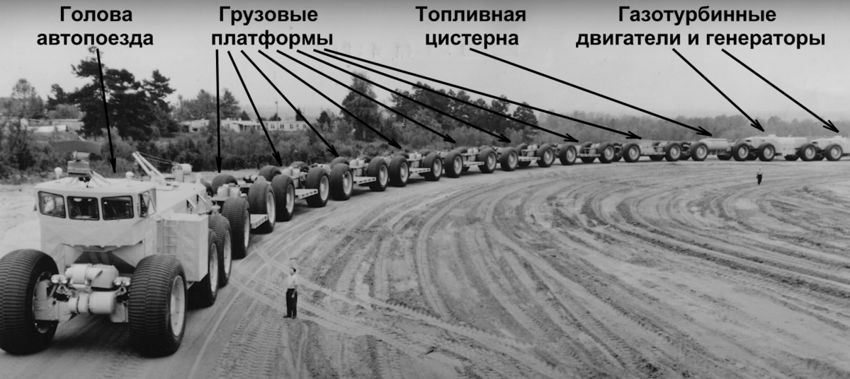
An ordinary tank was chosen as a fuel tank. Her placed on a wheeled platform. Fuel from it was supplied to four gas turbine engines that rotated electric generators. So electricity was generated. 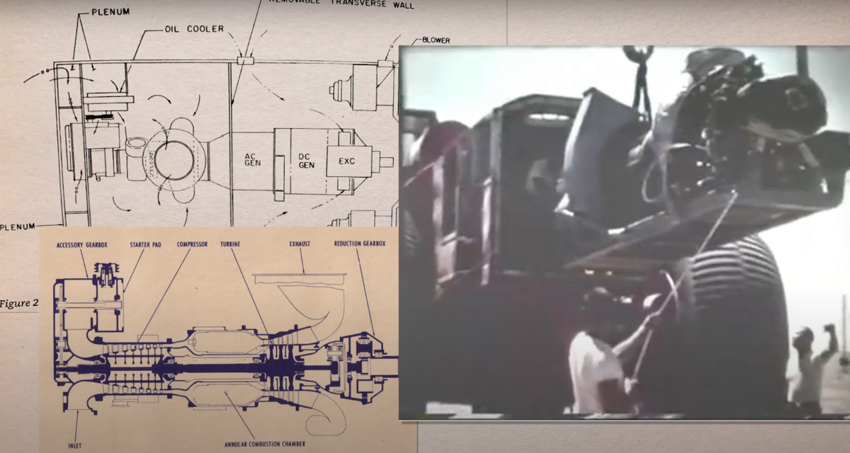
This electricity was used to power electric motor-wheels, which were mounted together with two-stage planetary gearboxes directly into the hub of each wheel. And thus the road train actually became all-wheel drive. The total power of these engines was about 5 thousand hp.
The total number of wheels reached 54, but could be increased. The height of each wheel is 3.5 m. The total load capacity of all intermediate cargo platforms was approximately 400 tons. She depending on the type of soil, or the depth of snow. Max speed was only 35 km/h. 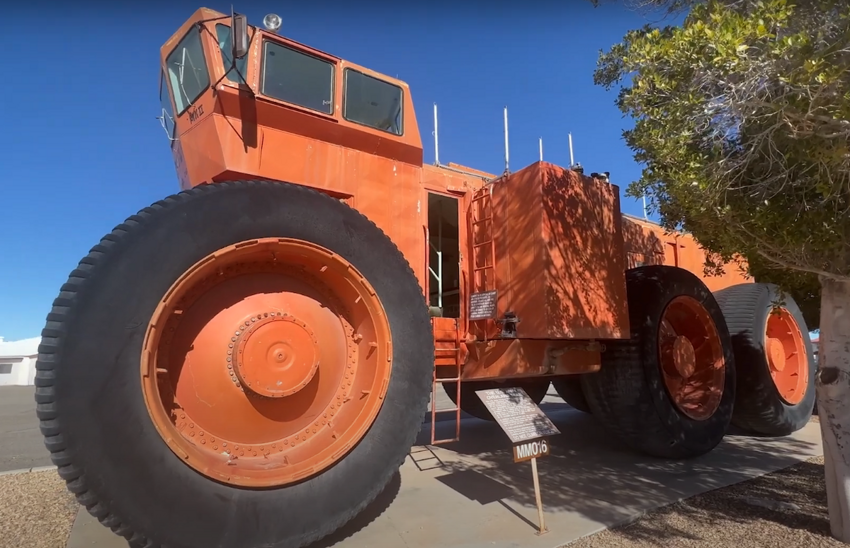
Well, now it's time to get into the head of this road train.
Climb up the stairs and go straight into the doorway. Here we have a kitchen. It is equipped with everything you need. cooking electrical panel. There is also a double sink and extractor. 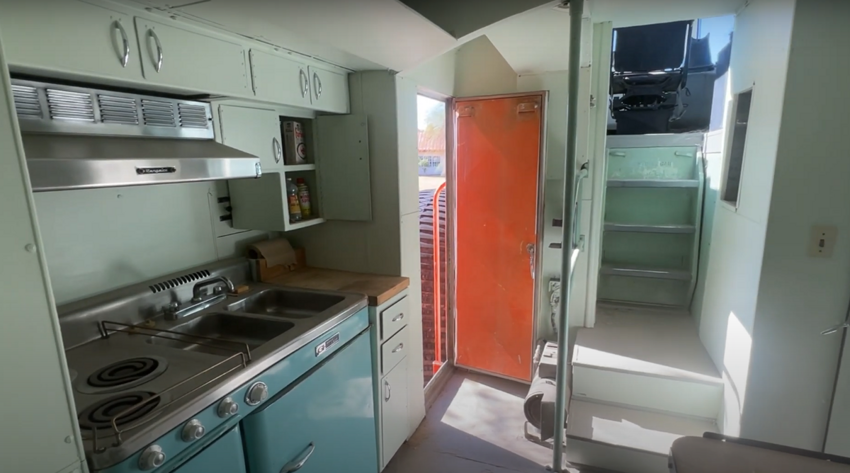
There is a refrigerator with a freezer under the sink in the closet. 
An electric oven is located next to the refrigerator. 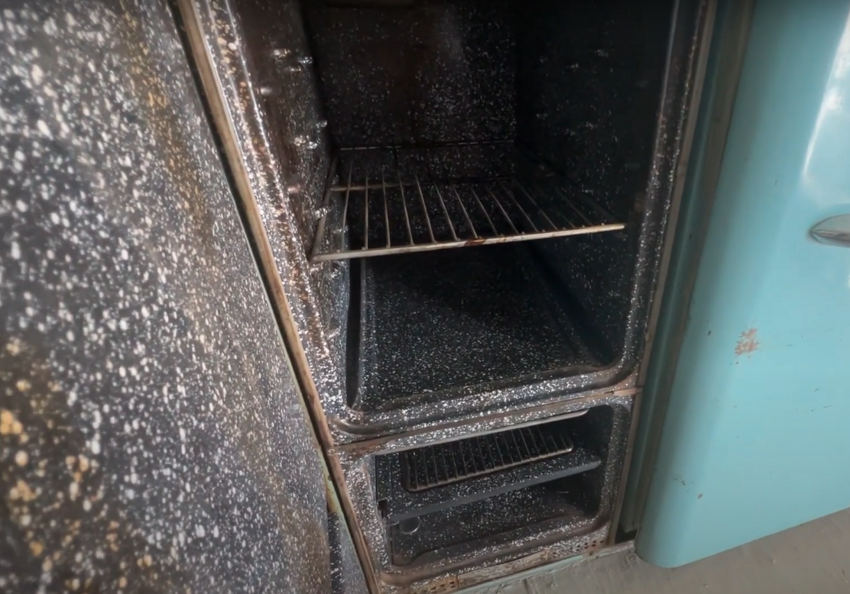
The dining table is designed for four people. 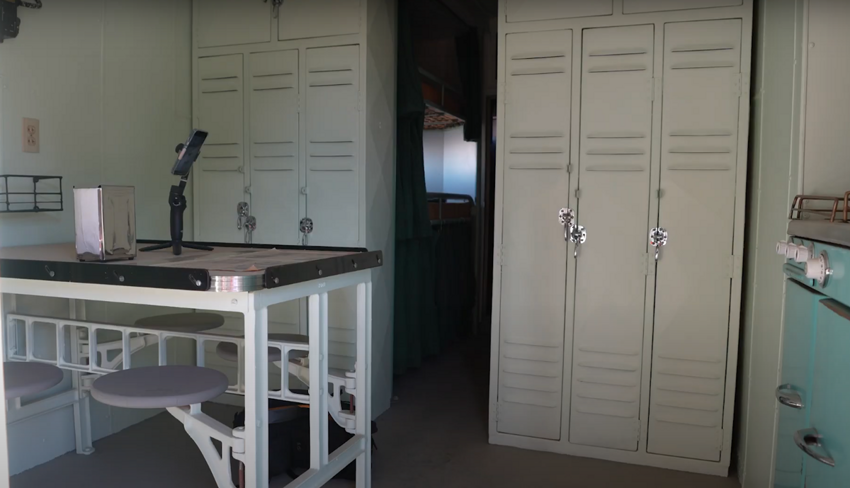
If we go deeper, we get into the so-called bedroom. There are four beds, two on each side. 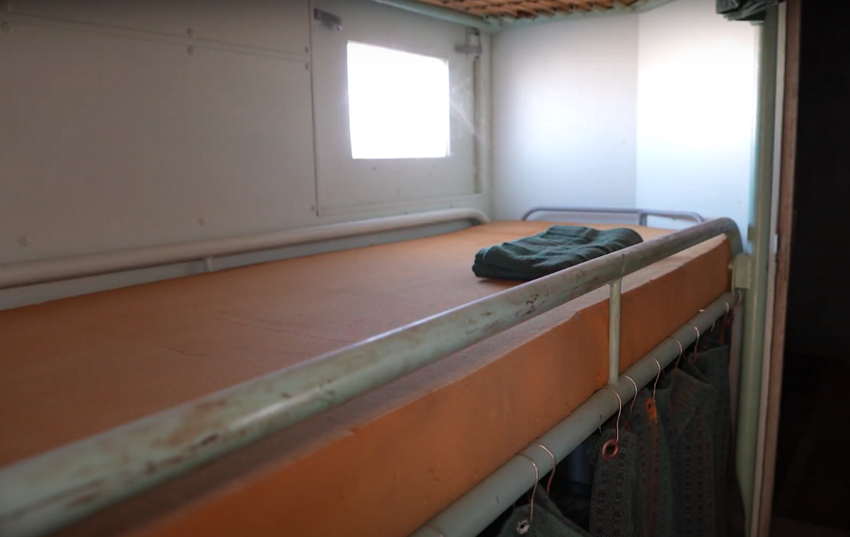
If you go even further, then here is switchboard room. There are cabinets with electrical equipment, which is responsible for the distribution of electricity across to the entire composition. 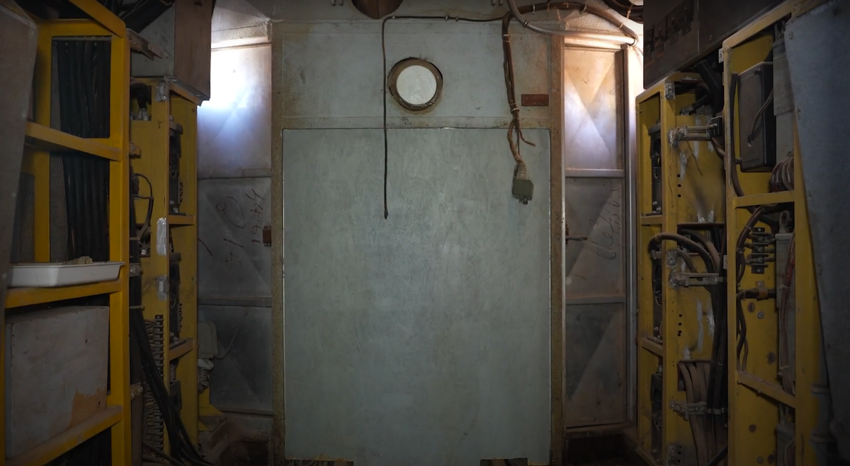
This is the blower fan. And he is needed for forced blowing the traction motors so that they do not overheat. Such fans were throughout the composition of each wheel. 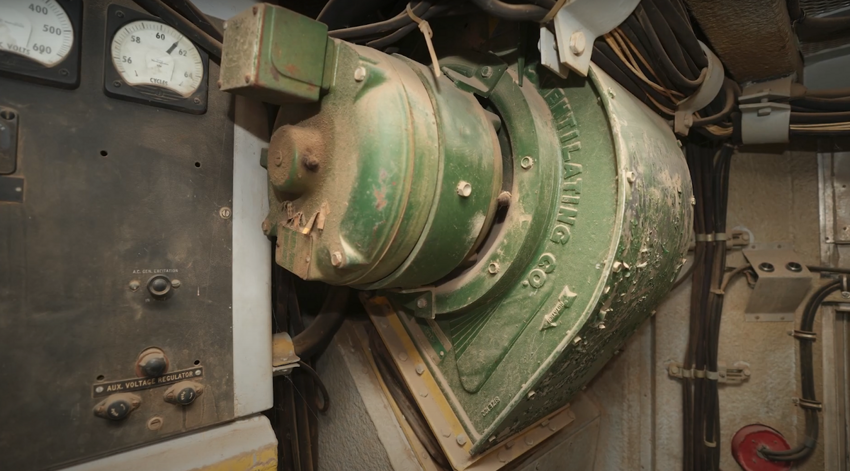
We open the door and get into the toilet. There is a wash basin and a toilet. 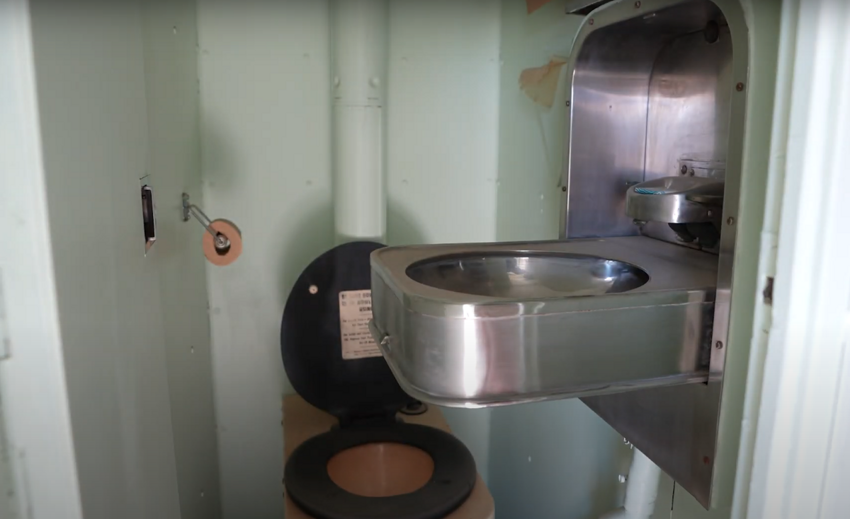
Now we go in the opposite direction, to where the cabin locomotive brigade. We go up the stairs and get into a pretty spacious room with a large glass area. How many windows do you need? for a good view of the prospect and the entire road train. 
The train commander sat in the front right. He mainly looked at radar so as not to accidentally miss an enemy missile. Left front driver's seat. He worked at the console and twisted the knob of the potentiometer, adjusting power and speed. The navigator followed the route and maps. A kept in touch with the command center communications operator. 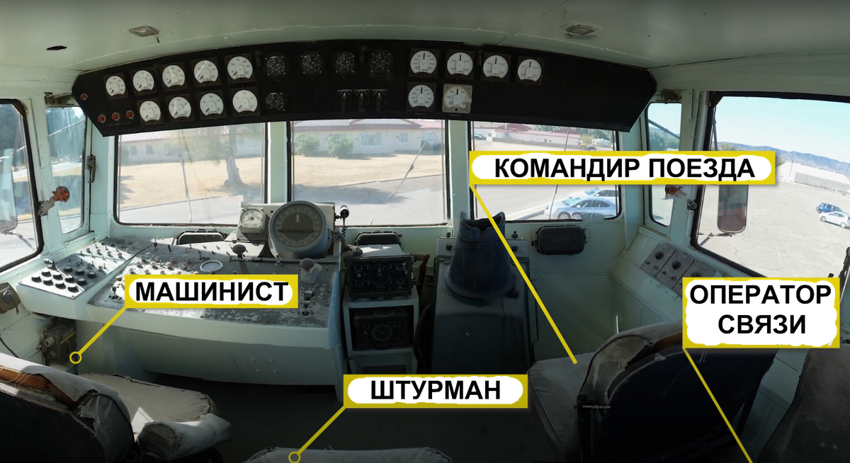
Of course, this whole project was sent to the dustbin of history, because the command recognized this method of delivering goods ineffective. Plus, such a road train is, first of all, a good target. Subsequently, the management gave preference to the transportation of goods on heavy Sikorsky helicopters, and this road train was actually cut for scrap metal. Only its head has survived.







